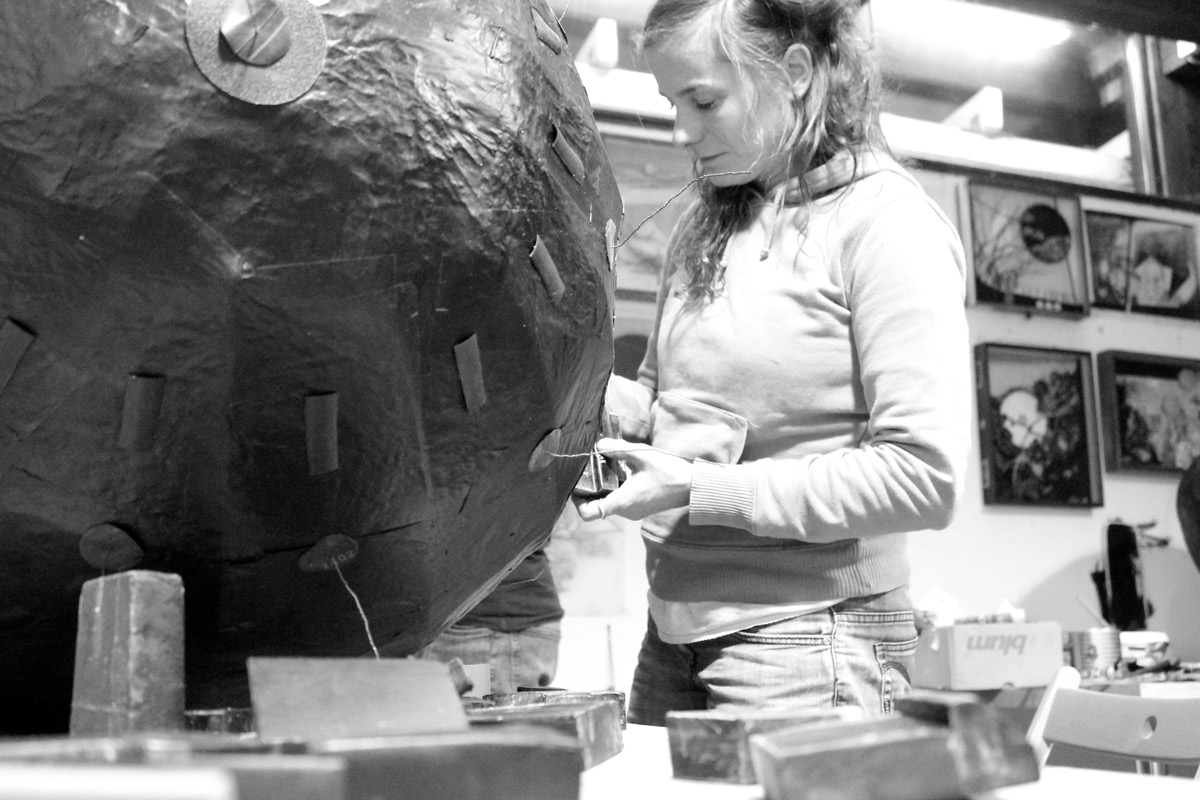German born artist Katharina Meister is portraying important environmental messages through her artwork. She is passionately interested in the relationship between the natural landscape and man, the consequences of climate change, and the human behaviour in recognizing the need to make conscious changes.
JahRoc Galleries is proud to represent the 3 dimensional artwork of Katharina Meister through her mixed media and installations.
Enjoy Getting To Know Katharina Meister…
When did you first feel the desire to be artistic and realize you had talent?
As long as I can think I am drawing and painting. I just loved doing it. I remember the huge windows of the dining room in my parents’ house, through which I could see the forest. My first aquarelle paintings were of the black silhouettes of these trees in front of a setting sun.
I also had my first studio in my parents’ house, it was in the basement. And my mum always made sure I had all the paints I wanted to use, so that I could realize my artistic ideas.
Where did you learn your art?
Well officially I have studied art at the State Academy of Fine Arts Karlsruhe in Germany. However, I would say that my “apprentice” started way earlier in my parents’ home, as I have described above. My mum not only gave me all the art equipment that I would need, but we also visited museums and quiet often she would by artist catalogues, which I than would borrow to copy the artists work. I remember that I was mostly interested in drawings and I urgently wanted to be able to draw in a realistic way, so I copied those artists’ styles until I could do it myself.
What inspires you most?
This is easy: NATURE and the way we humans treat it.
What message are you sending to the viewer of your art?
Since 2010 the topic for my art is the climate change. So the message that I want to send is, that I wish that we all would start to live in a more sustainable way. I would want us to recognize, that we can only survive as a species, if we see that we are part of something, part of nature, part of this earth and not superior. The English language has such a beautiful phrase to describe this; I would want us to be more “down to earth”.
Describe your studio…
My studio is my favourite place here in Western Australia. My husband built it for me. It is only little, but it combines so many aspects, which are important to me. First of all, it is built in a sustainable way, mostly from second-hand and local natural material. It has lots of windows and hence is very light. Two windows are very special, as they are round. And best of all, through these windows I can see trees, as it is surrounded by natural bush.
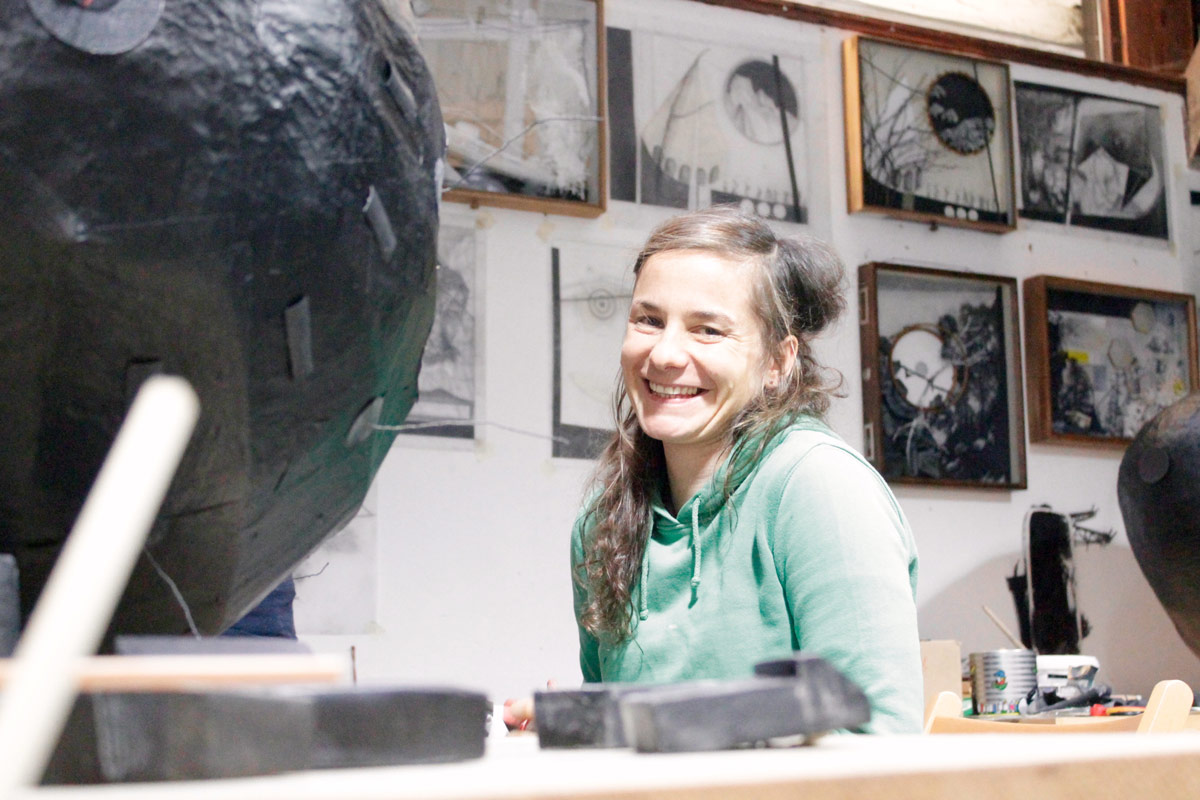
Describe your typical day of creating art…
Well this might sound very boring, but I try to treat my studio days just like any other normal working day. So I start by around 9.00 am and finish around 5.00 pm.
What mediums do you use and why?
My main material is paper. I not only use it for drawings and papercuts, but also for my sculptures. What I like about paper is, that it is a natural product; it is very light and easy to work with, which means that I do not need any heavy machinery to shape it.
What are you working on now?
The series I am just working on is called Minus 2.8 degrees. It is about the north pole and the melting of the ice in the arctic region. Climate change is most visible in the arctic regions. And I want to show how urgent it is that we start changing our habits. However with my art I do not only want to show how dramatic the situation is, but also collect ideas on how the situation could be improved.
What are your recent career achievements you fell proud of?
I was very proud when I received the art scholarship of the Otmar Alt Foundation in Hamm Germany last year (2016). For half a year the scholar was given a house including a studio and a monthly salary. At the end of the scholarship a solo show was organized and a catalogue was printed and published. This was a time in which I could solely focused on the development of my art, without worrying about my financial situation.
In the same year I received a second scholarship called Mathilde Planck Scholarship, which supports young academics on their career path into university. As part of this scholarship I was able to lecture at the University of Konstanz, which was a wonderful experience.
What do you love most about what you do?
…the learning aspect. For all my art series and every individual piece of work I do a lot of reading and research. And then, I try to transform this knowledge into a visual form to path it on. When people are interested in my art, they want to know, what it is about and I can spread my message even further. So I am learning and teaching at the same time. But I am not only learning through research, but also from the viewer’s perspective. The learning-teaching aspect is something like a circular movement, and that is beautiful.
Where can you see yourself in 10 years?
As I said before, I have already had the chance to lecture at university. This is something I love doing. I love to pass on my enthusiasm for art and see it in others. So a dream of mine is to be a professor for art… maybe in 10 years this dream will became true?!
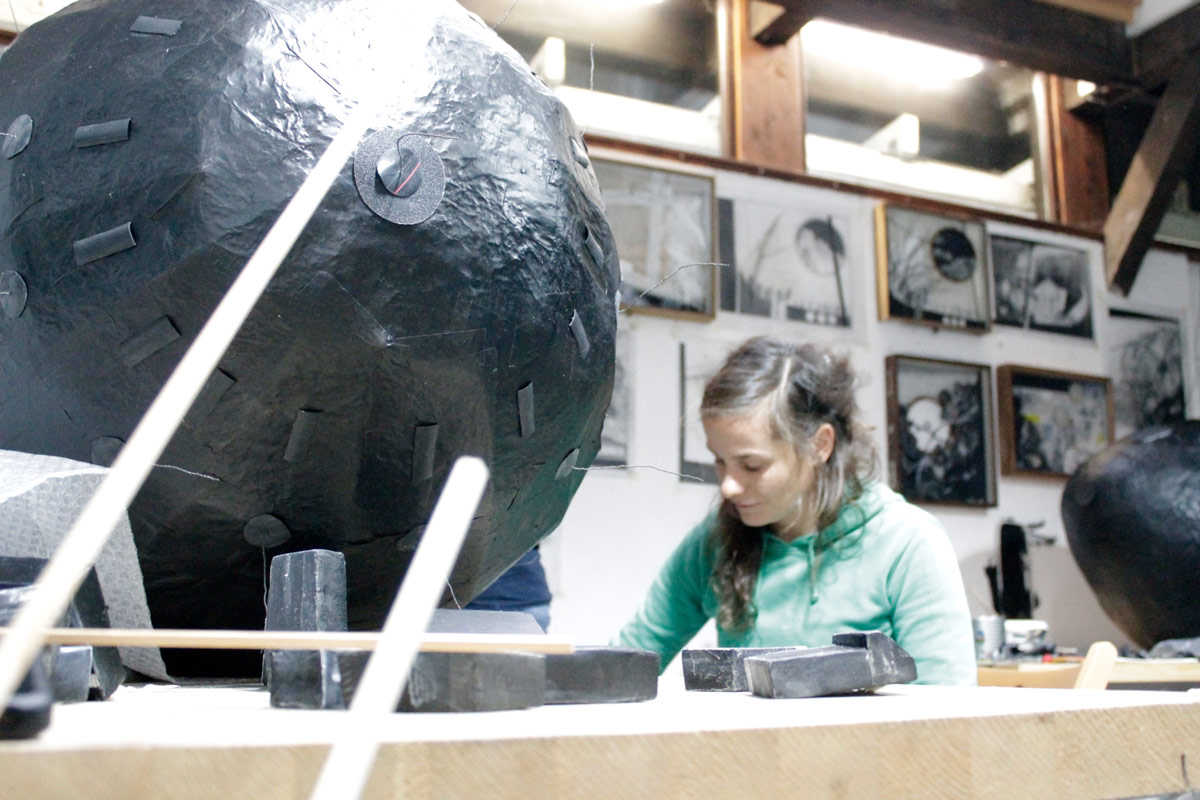
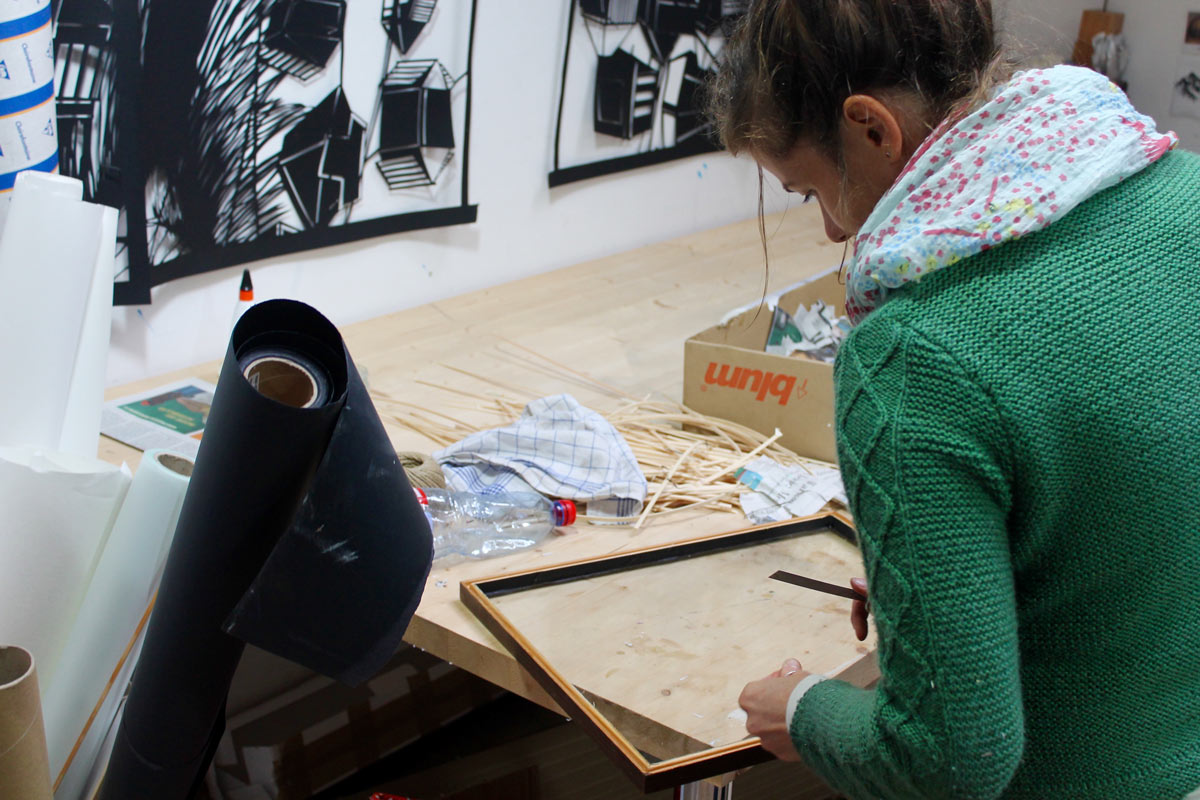
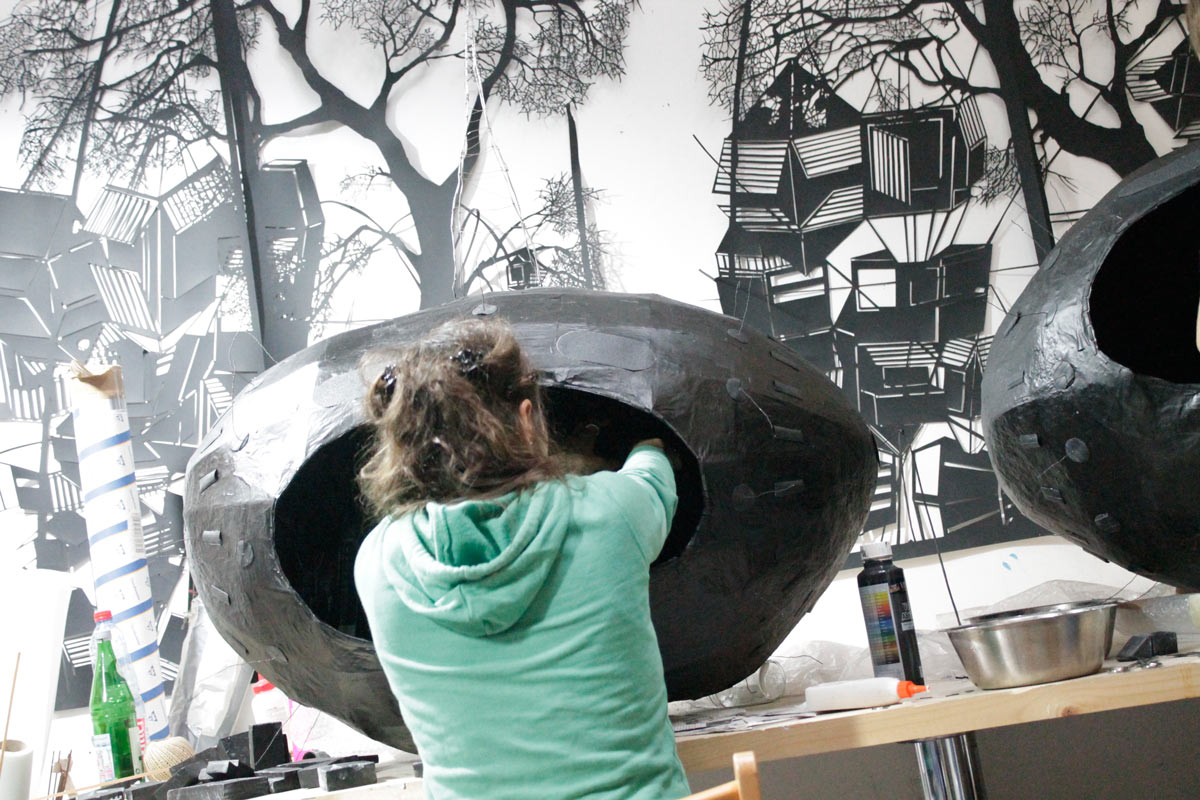
Artist Biography – Katharina Meister
Since 2010 Katharina has developed 5 series of artworks that look at the topic of manmade climate change from different angles. Her current 2017 series “Minus Two Point Eight Degrees” explores the arctic region and the contradictory groups interested in it, one for it’s economic potential if the ice melts verses the other that recognise it as a sign to make changes. In this world full of self importance, Katharina Meister believes each individual needs to see themselves as part of nature as a whole and recognise that they can only exist within this whole.
Artist Statement
Since the end of 2010 my art is circulating around the topic of the manmade climate change. Until now I have created four series, all of which look at the topic from a different angle. Currently I am working on a fives series. The titles of the series are:
- Landscape rooms (2010-2012)
- Heterotopias (2012-2014)
- Flying Houses (2014-2015)
- Element 119 De (2015-2016)
- Minus two point eight degrees (2017).
The series Landscaperoom plays with the relationship between landscape or nature and manmade spaces such as houses, cities etc. In our time the general scenario is such, that nature is captured by society or technique. To show this, I have created the insights of rooms in showcases and then used nature elements, which would grow over these manmade rooms in an effort to reclaim space. In the series Heterotopias I try to illustrate the consequences of climate catastrophes such as droughts, bushfires, floods etc. The title of the series does not directly indicate the content of the series, but is chosen consciously. Even when scientists describe the climate change and explain how human behavior is the cause of it, it is still hard for individuals to directly recognize the influence of their own behavior on the climate. The cause-consequence-relationship in the field of climate change is not easily visible, this is why it is hard for the individual to estimate the extent of their own actions and even harder to change their own behavior in a sustainable way. It is getting even more complicated, because changes in climate are by their nature very slow moving processes, so the actions we take today, will not be visible for us, but for future generations only. Heterotopias is a term developed by Michael Foucault, which defines actually implemented utopias as places, which because they became reality, are actually asking to question reality, to discuss what reality really is. I see climate change as one of these implemented utopias, as it is a real problem, but still so hard to grasp. But because climate change is real, it asks us to think about our current behavior, hence reality, and if we can keep it upright, or if we have to change dramatically, if we want that future generations can still have the chance to live happily on this beautiful planet. The series Flying Houses is playing with the thought: how would our housing look if we all become climate refugees? Housing then would be transportable and light and functional in different climate conditions. The simple tent was the starting point for my thoughts and creative actions, which I then changed in its size; shape etc. in the different works of this series. So the art pieces show round and squared tents; some, which could be hung into trees or set up on top of canoes. The series Element 119 De is a series which I just recently completed. The work’s title is a reference to the periodic table, which at present, however, ends with element 118 Uuo (Ununoctium). It’s the favourite chart of chemists and comprises all natural and artificial elements by assigning each an atomic number and formula symbol. Following its manifestation in my art I propose to amend element 119 De, the abbreviation De referring to the German word for humility, “Demut”. Since our world is threatening to burst due to climate change, refugee flows or the decomposition of the EU, to name but a few, I wonder which is the missing element. It’s the one that we may not have discovered yet or that we may need to rediscover. The element that may help us realize that our world is the foundation stone of our own life, that it is a place we all have to share and that we should handle it sustainably. Humility is not to be confused with submissiveness, it rather needs to be interpreted as the understanding that the self is only part of the whole and can only exist within this whole. In this era of new technologies and social media self-display and self-presentation seem to have become compulsive, the self is becoming more important all the time. Against this backdrop, people lose sight of the importance of considering themselves as part of a whole …, but also as a part of nature and the world!” Minus two point eight degrees is the series I am presently working on. The series is about the arctic and the interest in this region by all the countries surrounding it. The arctic is the region where the climate change becomes most visible in the rapid melting of the ice. Although there are many voices wanting to change this, there are at least the same amount of voices, who are interested in this area economically an hence are not that scared by all the ice disappearing as that would allow easier access to sources of fossil fuels hidden underneath the ocean bed. So the series Minus two point eight degrees tries to visualize these contradicting viewpoints.
Katharina Meister – Curriculum Vitae
1981
- born in Karlsruhe/Germany
2002 – 2007
- Studied at the State Academy of Fine Arts Karlsruhe, Germany with
- Prof. Gerd van Dülmen and Prof. Daniel Roth
2004
- Yolkart-Grant, Nottingham/GB
2006
- Erasmus Grant, Universität Porto, Faculdade de Belas Artes, Porto/P
2010
- Studio grant artgrant Kunstförderung
2011
- Prize of the artist fair Karlsruhe
since 2011
- Lecturer Acedemy for Painting Berlin
2012
- Lecturer in Art, University of Pedagogic Karlsruhe
2016
- Otmar Alt Grant and Artist in Residence Program
- University teacher at the University of Konstanz (University of Applied Sciences)
- Katharina Meister lives and works in Margaret River/Australia and Karlsruhe/Germany.
Exhibitions
2017
- Solo show Art House Friedberg (E)
- Solo show Art House Mosbach (E)
- Art Project: Art in Churches in der Wetterau (E)
- art KARLSRUHE, GALERIE Supper
- Group Exhibition Galerie Irrgang, Leipzig, Germany
- Group Exhibition, Salon der Gegenwart, Hamburg Germany
- 25 Jubilee Exhibition Otmar Alt Foundation
2016
- Noiree, Kunstverein Friedberg
- light + shadow, Kunstverein Speyer
- SCOPE Basel, wichtendahl. Galerie
- ART Kamen, Otmar-Alt-Stiftung
- Element 119 De“, Otmar-Alt-Stiftung (E)
- 2015
- art KARLSRUHE, GALERIE Supper
- Flying Houses, wichtendahl Galerie, Berlin (E)
- Schere – Schnitt – Papier, Landesgalerie Burgenland, Eisensatdt, Österreich
- Städtische Galerie Wangen
- Aus dem Dunkeln, Galerie Supper, Baden-Baden
2014
- Reflexion, wichtendahl. Galerie, Berlin
- art KARLSRUHE, GALERIE Supper (E)
2013
- Gruppenausstellung, Kunstverein Jockrim
- fragil, Meppen Kunstverein
- Gruppenausstellung, Museum of Modern Art Wien
- SCOPE Basel, wichtendahl. galerie
- art KARLSRUHE, GALERIE Supper
2012
- Heterotopien, wichtendahl. galerie, Berlin (E)
- Deltabeben. Regionale 2012, Kunstverein Mannheim
- just paper, Marburger Kunstverein
- GALERIE Supper, Karlsruhe
- SCOPE Basel, wichtendahl. galerie
- art KARLSRUHE, GALERIE Supper
2011
- non solo disegno, wichtendahl. galerie, Berlin
- Handfall, Orgelfabrik Karlsruhe-Durlach
- Galerie Brötzinger Art e.V., Pforzheim
- Art Helsinki, Finnland, GALERIE Supper
- Munich Contempo, GALERIE Supper
- art KARLSRUHE, GALERIE Supper
2010
- Kunst- und Skulpturenmuseum Heilbronn
- Gruppenausstellung,GALERIE Supper, Karlsruhe
- art KARLSRUHE, GALERIE Supper
- KIAF, Seoul, Südkorea, GALERIE Supper
- Art Helsinki, Finnland, GALERIE Supper
- ART.FAIR 21, Köln, GALERIE Supper
2009
- Wenn mich niemand danach fragt,… GALERIE Supper, Karlsruhe (E)
- Museum Bellerive, Zürich, Schweiz
- GALERIE Supper, Karlsruhe
- art KARLSRUHE, GALERIE Supper
- ART.FAIR 21, Köln, GALERIE Supper
- KIAF, Seoul, Südkorea, GALERIE Supper
- Art Helsinki, Finnland, GALERIE Supper
2008
- art Karlsruhe, GALERIE Supper (E)
- Gruppenausstellung, Galerie Marion Scharmann, Köln
- ART.FAIR 21, Köln, GALERIE Supper
2007
- Kunstraum Morgenstraße, Karlsruhe (E)
- GALERIE Supper, Karlsruhe
- Modern07, München, GALERIE Supper
- ART.FAIR 21, Köln, GALERIE Supper
2004
- Malt Cross Hall, Nottingham, England
E = exclusive exhibition
Katharina Meister Art
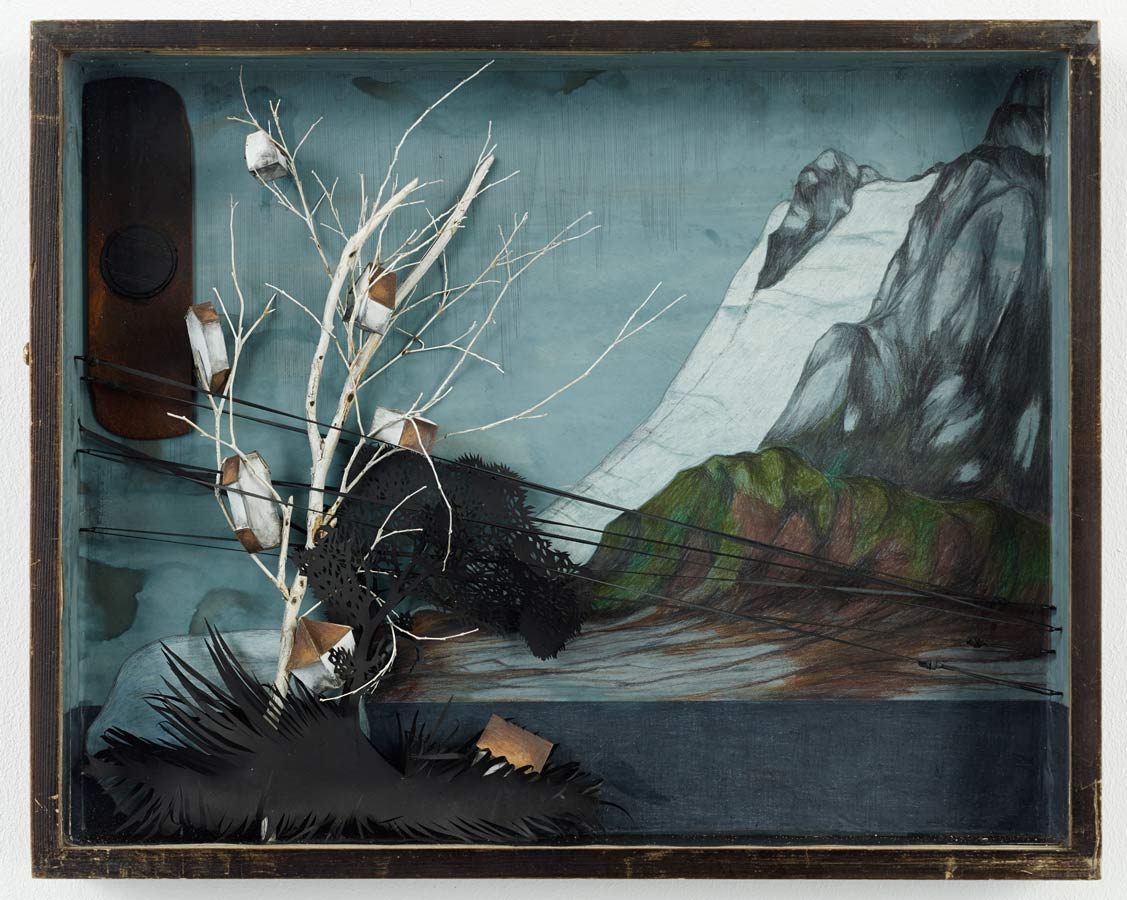
mixed media, paper, wooden showcase
50cm x 40cm x 6cm
SOLD
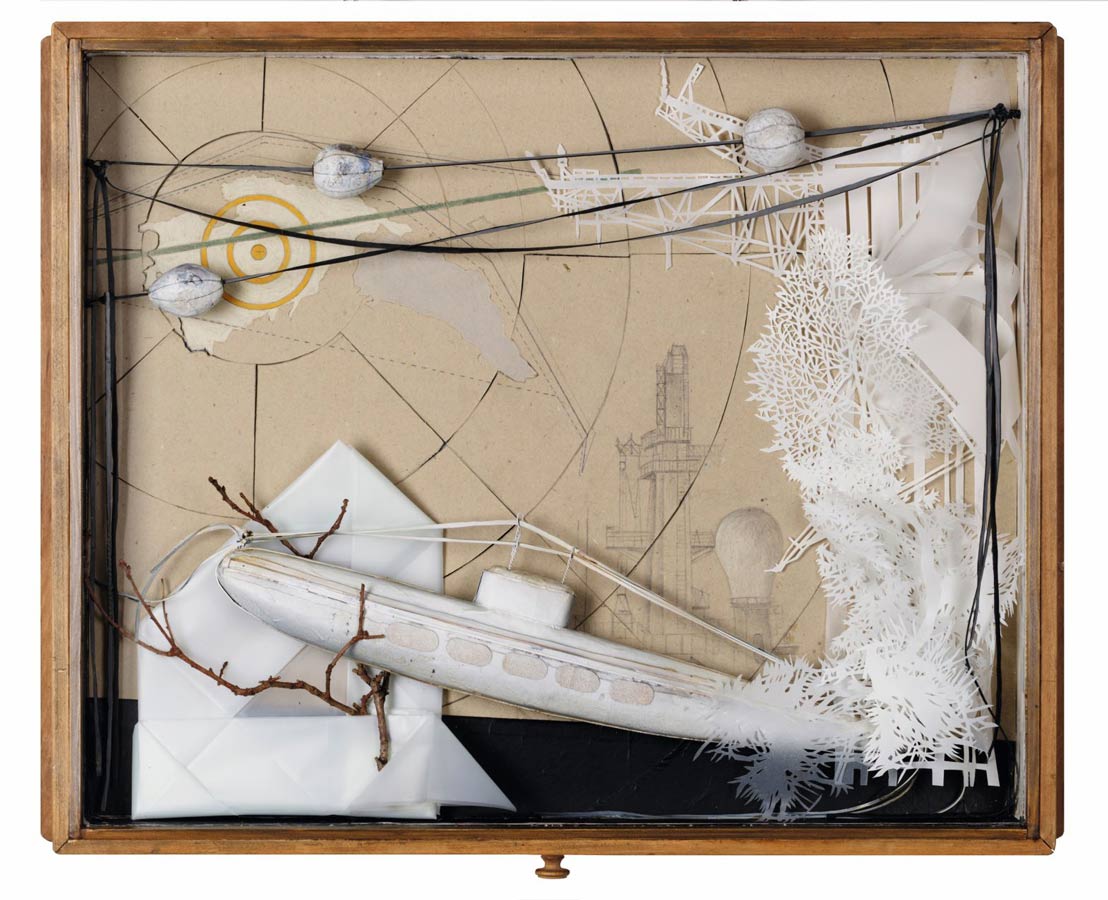
mixed media, paper, wooden showcase
48.5cm x 58cm x 6.5cm
SOLD

